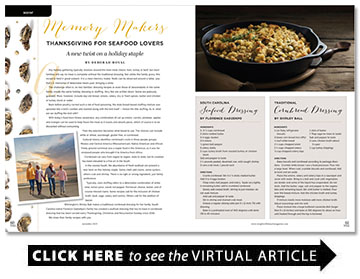Thanksgiving for Seafood Lovers
A new twist on a holiday staple
BY Deborah Royal
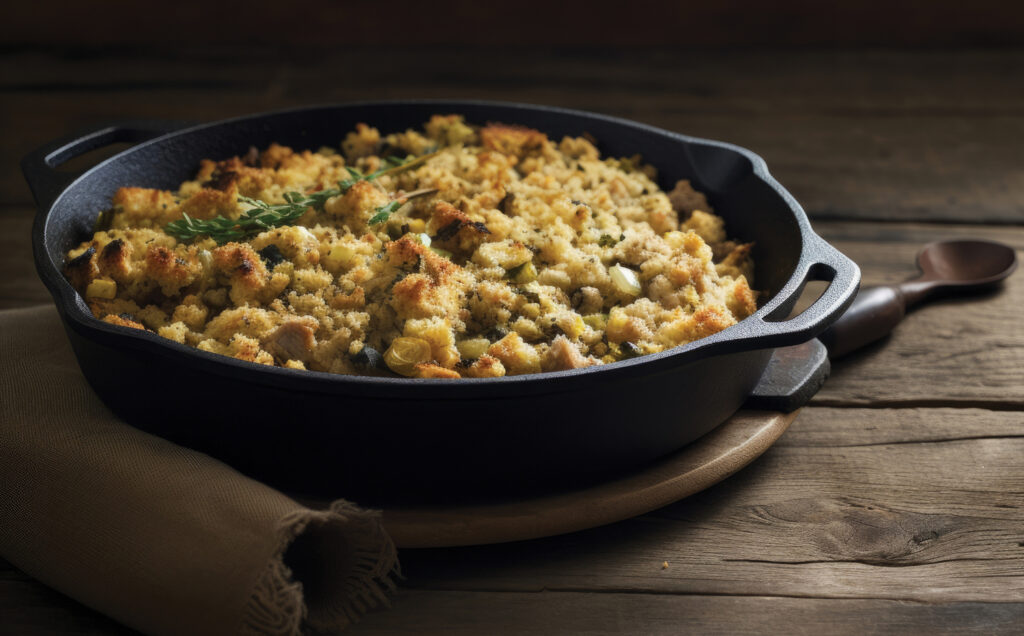
Any holiday gathering typically revolves around the main meat choice, ham, turkey or beef, but most families will say no meal is complete without the traditional dressing. Not unlike the family gravy, this recipe is held in great esteem. It is a meal memory maker. Nods can be observed around a table, yep, that’s it, memories of delectable meals past, bringing a smile.
The challenge often is, no two families’ dressing recipes or even those of descendants in the same family create the same holiday dressing or stuffing. Very few are written down. Some are jealously guarded. Most, however, include day-old bread, onions, celery, dry or fresh spices, butter and chicken or turkey stock or water.
Back before poultry carried such a risk of food poisoning, the stale bread-based stuffing mixture was spooned into a bird’s cavities and roasted along with the bird itself — hence the title stuffing. As in: what are we stuffing the bird with?
With today’s food-born illness awareness, any combination of cut up onions, carrots, potatoes, apples and oranges can be used to help flavor the meat as it roasts and absorb juices, which of course is to be discarded without consuming.
Then the selection becomes what bread to use. The choices can include white or wheat, sourdough, gluten free, or cornbread.
Cultural history identifies cornbread’s roots in three people groups: Mexico and Central America (Mesoamerican), Native American and African. Finely ground cornmeal was a staple food in the Americas, as it was for enslaved people who brought it to America from Africa.
Cornbread can vary from region to region, state to state, but its creation has been elevated to a fine art in the South.
In the coastal South, the abundance of fresh seafood can present a new twist on this holiday staple. Some chefs add clams, some oysters, others crab and shrimp. There is no right or wrong ingredient, just family preference.
Typically, clam stuffing refers to a delectable combination of white wine, lemon juice, sweet red pepper, Parmesan cheese, butter, and of course minced clams. Some recipes call for the inclusion of chicken broth, basil, sage, celery and carrots. Others call for the addition of bacon.
Wilmington’s Shirley Ball makes a traditional cornbread dressing for her family. South Carolina native Florence Gadzekpo’s family has created a seafood dressing that has its base in cornbread dressing that has been served every Thanksgiving, Christmas and Resurrection Sunday since 2016.
We share their family recipes with you.
South Carolina Seafood Dressing
By Florence Gadzekpo
Ingredients
- 3 -3 ½ cups cornbread
- 2 sticks melted butter
- 3-4 eggs, beaten
- 2-3 onions
- ½ green bell pepper
- 5 celery stalks
- 2 cups turkey broth from roasted turkey or chicken stock
- Salt and pepper to taste
- 1 ½ pounds peeled, deveined, raw, wild-caught shrimp
- 2 cans crab meat, 1 pound each
Directions
Crumb cornbread. Stir in 1 ¾ sticks melted butter. Add 3 to 4 eggs beaten.
Chop onion, bell pepper, and celery. Saute very lightly in remaining butter, add to crumbled cornbread.
Slowly add cooled broth, stirring to just moisten, do not soak mixture.
Add salt and pepper to taste.
Stir in shrimp and drained crab meat.
Grease a regular oblong cake pan 9 x 11-inch. Fill with dressing.
Bake in a preheated oven of 400 degrees until done (35 to 40 minutes).
Traditional Cornbread Dressing
By Shirley Ball
Ingredients
- 1 can flaky refrigerator biscuits
- 3 boxes corn bread mix (Jiffy)
- ½ loaf white bread
- 1 ½ cups chopped onion
- 1 ½ cups chopped celery
- ½ cup chopped celery tops
- 1 stick of butter
- 1 Tbsp sage (or more to taste)
- Salt and pepper to taste
- 2 cans chicken broth (about 3 cups)
- 1 cup turkey drippings
Directions
Bake biscuits and cornbread according to package directions. Crumble white bread. I use a food processor. Pour into a large bowl. When cool, crumble biscuits and cornbread. Add to bowl and set aside.
Place the onions, celery and celery tops in a saucepan and cover with water. Bring to a boil and cook until vegetables are tender and some of the liquid has evaporated. Do not drain. Add the butter, sage, salt and pepper to the vegetables and remaining liquid. Stir until butter is melted. Pour over the bread mixture. Add the chicken broth and turkey drippings.
If mixture needs more moisture add more chicken broth. Adjust seasonings and mix well.
Place mixture into a large buttered casserole dish (larger than 9 x 13 inches) and bake at 350 degrees for about an hour until heated through and the top is browned.
What To Do With Leftover Stuffing: Make Stuffies
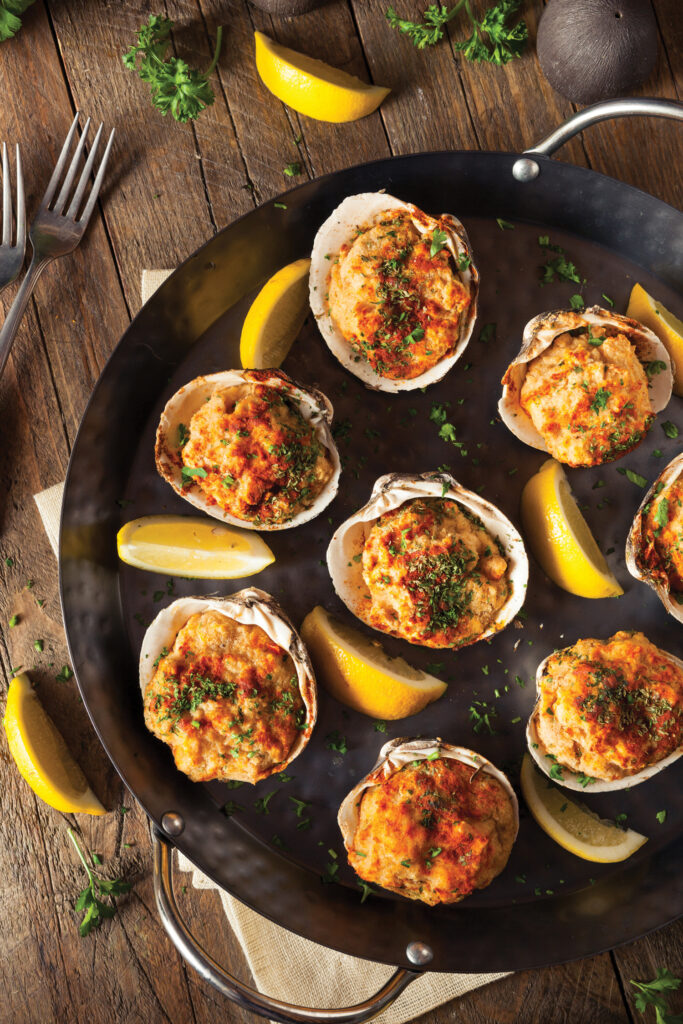
If you have left-over stuffing, you can use it to make what Rhode Islanders call “stuffies,” or stuffed clams.
This recipe makes about 4 cups, it fills about 24 clam shell halves (2-3 inch size) or about 24 mini-muffins.
Filling Ingredients
- 2 cups leftover/premade stuffing
- 1 Tbsp butter or olive oil
- ½ cup scallions, finely diced
- ½ cup green bell pepper, finely diced
- ½ cup red bell pepper, finely diced
- ½ cup celery, finely diced
- ½ cup Linguiça sausage (a Portuguese sausage which can be found locally at Publix food market) or other similar sausage such as Spanish chorizo, hot Italian sausage, garlic sausage (remove casing if on sausage) or pepperoni, finely diced
- ⅛ tsp celery salt
- ⅛ tsp finely ground pepper
- 1 tsp lemon juice
- Cooking oil spray
- 12 clams, or any 2-3 inch size (can usually be found at seafood markets and some grocery stores, check ahead to be sure they are in stock)
- OR 1 can of chopped clams, 6 ½ oz. size
If using fresh clams:
Meticulously clean, prepare and cook as directed (if needed, refer to online instructions for this). Keep 1/2 cup of the water used to boil the clams and filter out any sand or debris (a coffee filter can be used for this) and set aside. Clams from our area, which are usually from the Stump Sound to Masonboro Sound area, are filled with fine sand so be sure to set aside time to remove all debris.
After cooking clams, separate the clam meat from the shells. Finely dice the clam meat. Place in a fine mesh sieve and gently rinse to remove any remaining sediment.
Break the shells apart into two halves, clean shells again, remove any rough edges, and set aside.
If using canned clams:
Strain the clams, save all of the liquid and set clam juice aside. Chop the clams into a fine dice.
Topping Ingredients
- 1 cup cheddar cheese, finely shredded
- 1/8 cup parsley, finely diced (or dried parsley)
- Paprika or Smoked Paprika to sprinkle on top before baking
- 1 lemon, sliced or quartered for the serving
Directions
Preheat oven to 350 degrees.
Place the leftover stuffing in a large bowl.
In a large skillet or saucepan heat the butter or oil over medium heat. When melted/hot, add scallions. Lower the heat and after a brief simmer to soften the scallions, add peppers and celery. Simmer on low heat for another 5-10 minutes to soften and blend flavors.
Add minced Linguiça (or other spicy sausage), celery salt, pepper and, blend well. Simmer about 5 minutes more.
Remove pan from heat and add lemon juice and diced clams, blend well.
Place the stuffing in a large mixing bowl and add the above sautéed mixture, tossing gently.
Using the water to boil clams or the clam juice from the can, add liquid in 2 Tbsp increments, gently mixing after each addition of the liquid until the mixture holds together. If the original stuffing is moist, only 2 Tbsp will be needed, if stuffing is dry, more liquid may be needed. The mixture needs to be just moist enough to hold together when you fill clam shells/mini-muffin tins. Do not add too much liquid.
Spray the clam shells/muffin tin with cooking oil spray.
Fill with about 1 ½ Tbsp of the stuffing mixture per shell or tin opening.
Top with shredded cheese, a sprinkle of paprika and some parsley.
Bake for 15 minutes at 350 degrees.
You can clean and save the clam shells for future recipes — especially if you use canned clams — and want to use the shells to bake the filling in.
Serve with sliced lemons.
The “R” Months: Fact or Fiction
By Fritts Causby
Low tide is generally the best time to look for clams, and they can typically be found anywhere there is a bay or estuary. Clams can live in sandy, muddy or rocky areas.
Many ascribe to the traditional wisdom associated with other shellfish, that it is better to harvest them during the winter months. Gathering shellfish only during the months of September to April is a practice that may have been followed for at least 4,000 years.
The science behind the gathering of clams in the “R” months could be that red tides are more common in summer. The term refers to a type of algae that is harmful in high amounts. Consuming shellfish that have ingested these algae can result in serious illness.
The risk is mitigated by the fact that most of the clams that people consume these days are farmed and closely monitored for toxins.
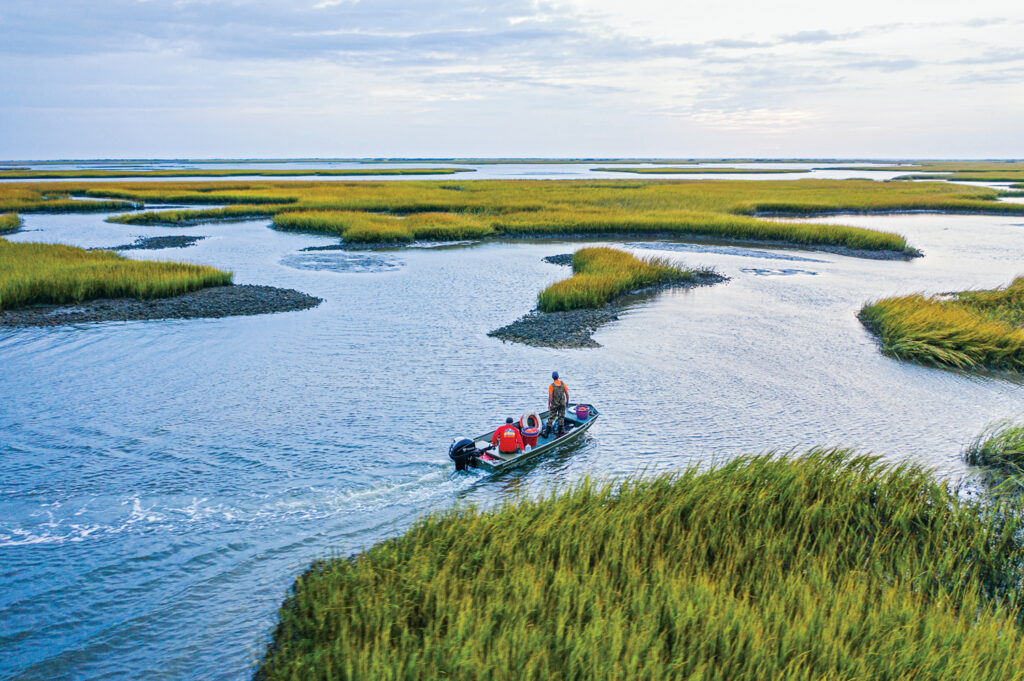
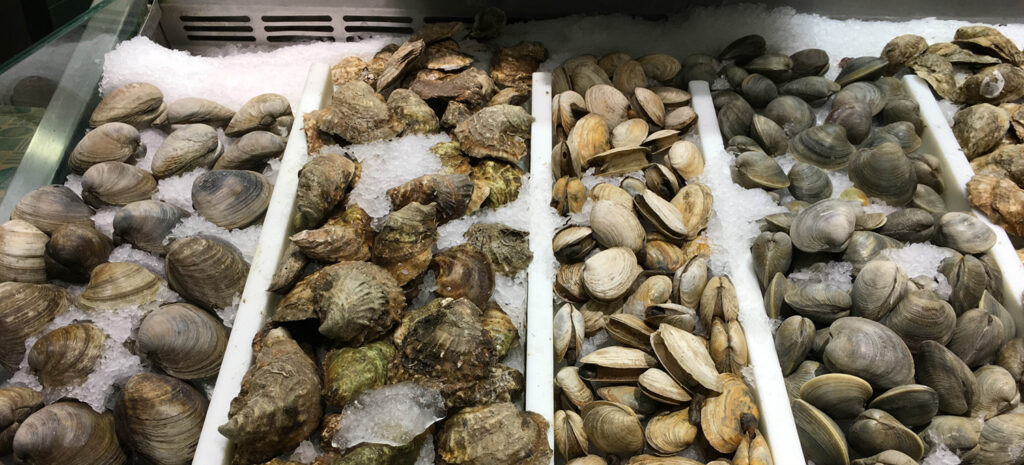
Venturing into one of the tidal creeks in and around the Wilmington area to search for clams would be inadvisable as they are mostly polluted by fecal coliform. In the State of Wilmington’s Waterways 2022 UNCW Surface Water Quality Report, it was found that Howe Creek, Hewletts Creek and Whiskey Creek were all at an impaired status and closed to shellfishing due to high levels of fecal coliform bacteria. Bradley Creek was at “currently supporting use” status as the upper portions had high fecal coliform counts but the sections along Wrightsville Avenue had generally good water quality.
Fecal coliform originates from pet/animal waste and septic and sewer overflows. Where there are high levels there is a strong likelihood that other disease-causing pathogens are present. This is likely why the Wilmington stormwater department asks residents to clean up after pets on public property as pet waste left on the ground can wash into waterways during heavy rain and degrade water quality, harm aquatic life, and transmit disease.
Purchasing clams that have been farmed may detract from clamming with family and friends, but the consistency of the product and the lack of harmful toxins more than makes up for that.
The seafood industry in the Carolinas is strong and likely to remain that way; some would argue the chance to fill up on a plate of fried flounder, oysters or shrimp is one of the best aspects of the local lifestyle.
